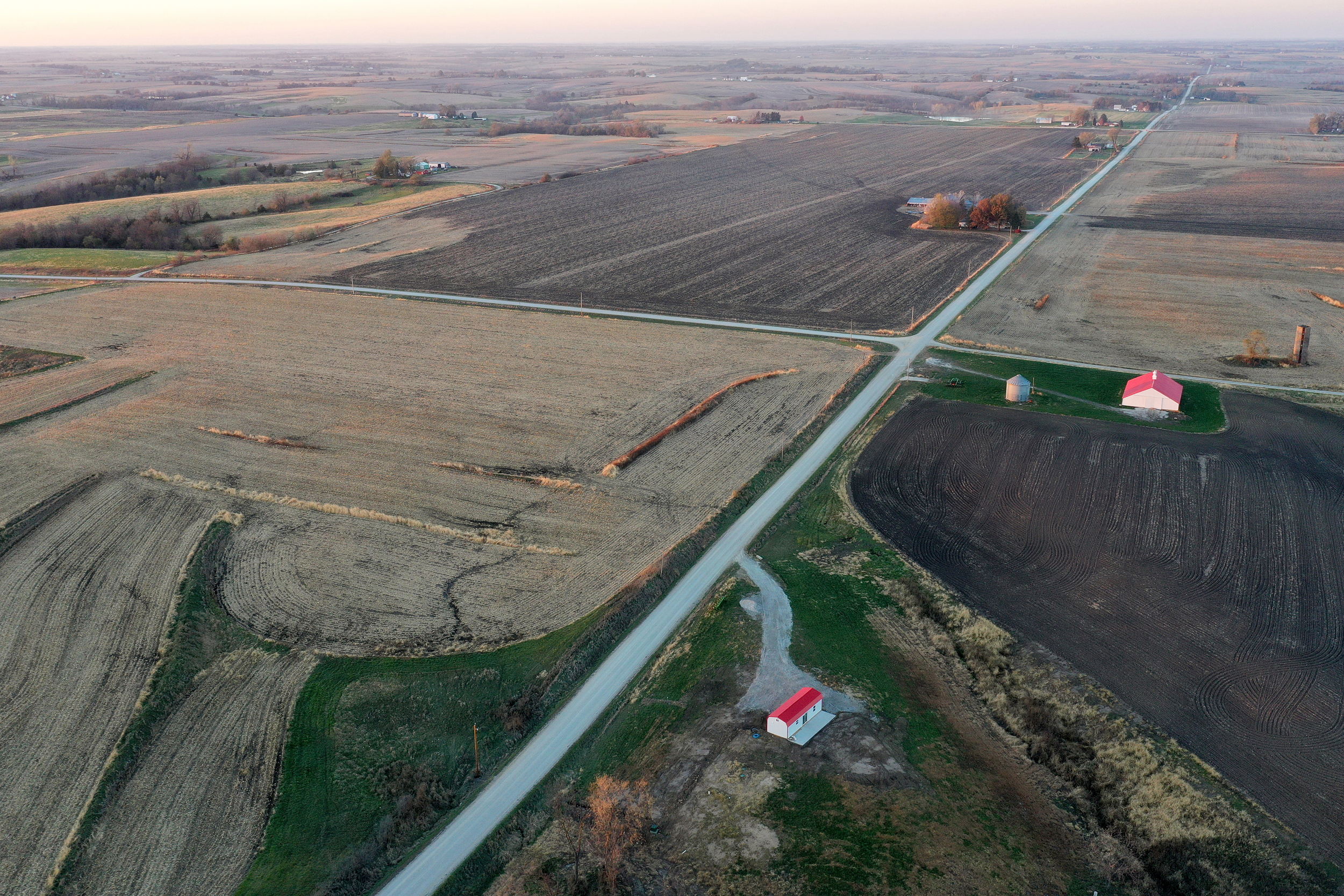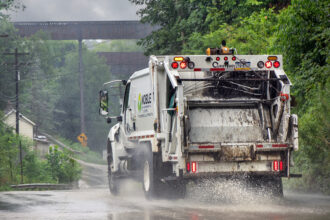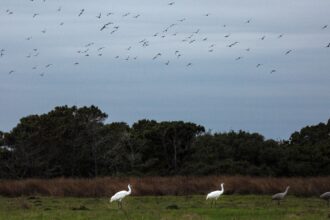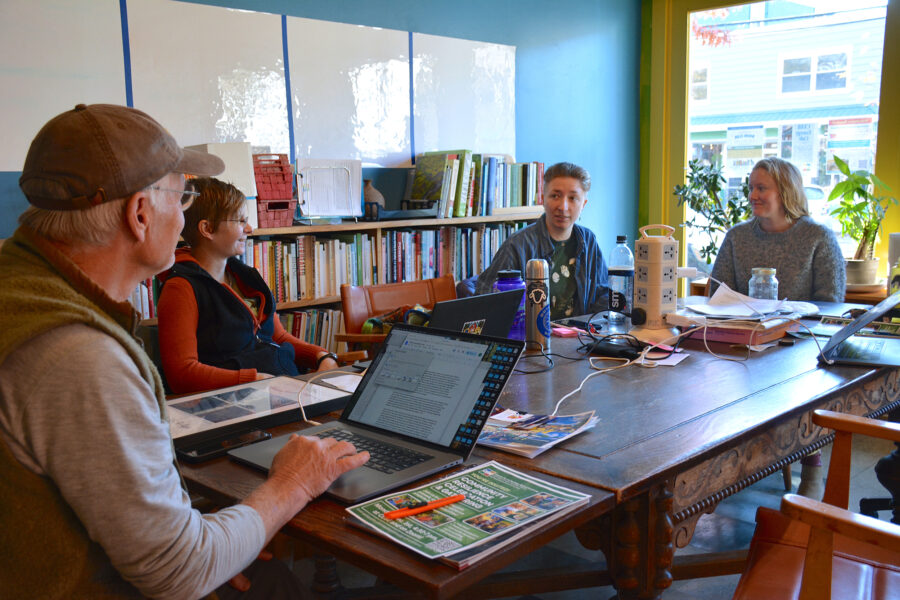DES MOINES, Iowa—For over a decade, a network of water quality sensors managed by the University of Iowa has provided publicly available data about waterways across the state.
And while Iowa grapples with a growing water quality crisis fueled by agricultural runoff, state government funding cuts have threatened the network’s future.
Now, the state’s largest county is stepping up to keep the 60 sensors online.
This week, the Polk County Board of Supervisors voted unanimously to invest $200,000 in the water quality monitoring network and its associated information system.
The network of sensors tracks and publishes real-time data measuring the nutrient nitrate—found in fertilizers, including manure spread on fields—as well as oxygen concentrations, pH, stream flow and temperature from 60 streams and rivers. Sensors take measurements at 10-minute intervals and upload the results to the online Iowa Water Quality Information System.
This real-time monitoring, managed by the University of Iowa’s hydroscience and engineering center, allows researchers, landowners and government agencies to more closely track the movement of nitrate in state waterways and evaluate the success of the Iowa Nutrient Reduction Strategy, said Larry Weber, the center’s director.
“This is vital work,” said Matt McCoy, chair of the Polk County board of supervisors, at a press conference Tuesday. “While I personally would like to see the state and federal government play a big role in helping us fund these datasets, unfortunately they’ve made decisions at the legislative and at the federal level not to do that.”
Most of the county’s 500,000 residents rely on the Raccoon and Des Moines rivers for their drinking water. Downstream from some of Iowa’s most intensively farmed counties, both rivers logged near record-high levels of nitrate pollution this year.
The University of Iowa’s 60 sensors account for three-quarters of the state’s continuous water monitors. The U.S. Geological Survey manages an additional 12 sensors, and the U.S. Department of Agriculture employs eight in and around its research farms in north central Iowa.
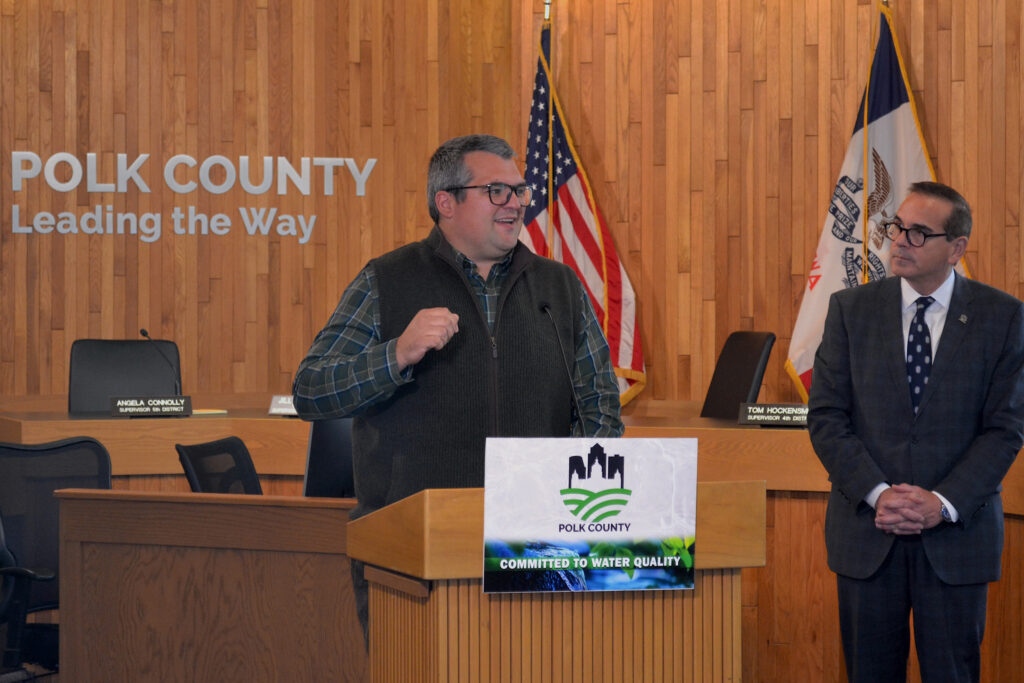
The Iowa Department of Natural Resources also reports data from monthly or twice-monthly sampling at a larger number of waterways across the state. That periodic data provides only a snapshot of overall water quality, said Weber.
Despite providing the bulk of the state’s water quality data, the University of Iowa network has not received state funding since 2023, said Weber.
In 2023, the Iowa Legislature passed a bill slashing $500,000 in funding for the Iowa Nutrient Research Center—the same amount that the center had historically allocated to the University of Iowa sensor network.
Sponsored by Republican state Sen. Dan Zumbach, a farmer, the bill diverted the half-million dollars to the Iowa Department of Agriculture to instead support voluntary conservation practices for farmers, such as planting buffer strips on the edge of fields to filter runoff or installing microbe-powered bioreactors to digest excess nitrate.
The bill also ended a requirement that the research center, housed at Iowa State University, collaborate with Iowa’s two other public universities.
In the wake of the cuts, the Nutrient Research Center continued to fund the University of Iowa water quality network, absorbing the losses across its programs. The following year, however, the center discontinued the funding.
Since then, a donation from the Walton Family Foundation has supported the network’s operation. Those funds will last through the summer of 2026, when the Polk County funds are slated to kick in, covering operating expenses for one additional year.
Weber is discussing similar investments with officials in Johnson and Linn counties, the second- and third-largest population centers in the state behind Polk County.
“It’s my opinion that, being a statewide network, either state or federal resources should be used to support a statewide effort. That’s not the case at the moment,” said Weber.
This story is funded by readers like you.
Our nonprofit newsroom provides award-winning climate coverage free of charge and advertising. We rely on donations from readers like you to keep going. Please donate now to support our work.
Donate NowPolk County residents have paid a literal price for the state’s lack of effective action on nutrient control. Des Moines Water Works, which serves much of the county, has invested millions of dollars in a state-of-the-art nitrate-removal facility. When nitrate levels in the Raccoon and Des Moines rivers spike, the city of Des Moines spends nearly $10,000 a day to operate the plant.
In 2023, the Polk County Board of Supervisors commissioned a “comprehensive, unbiased analysis of water quality in the Des Moines and Raccoon Rivers.”
The Central Iowa Source Water Research Assessment, conducted by a team of 16 scientists, sought to analyze all current and past research on water quality in the two rivers, identify gaps and outline potential actions by state and local governments to accelerate efforts to improve water quality.
Nearly half of Polk County’s $200,000 investment in the University of Iowa sensor network comes from the remaining unspent budget of the watershed assessment.
“We decided there isn’t a better use than collecting this data and funding this sensor project,” said McCoy, the Polk County supervisor.
One of the key takeaways from the Central Iowa Source Water Research Assessment was the need for continued water quality monitoring in Iowa, said John Swanson, water resources supervisor for Polk County. Investing in the University of Iowa sensor network safeguards critical data, he said.
“We need to use science to our advantage in this effort,” Swanson said at this week’s press conference. “We need to keep monitoring. We need to keep looking at the data.”
About This Story
Perhaps you noticed: This story, like all the news we publish, is free to read. That’s because Inside Climate News is a 501c3 nonprofit organization. We do not charge a subscription fee, lock our news behind a paywall, or clutter our website with ads. We make our news on climate and the environment freely available to you and anyone who wants it.
That’s not all. We also share our news for free with scores of other media organizations around the country. Many of them can’t afford to do environmental journalism of their own. We’ve built bureaus from coast to coast to report local stories, collaborate with local newsrooms and co-publish articles so that this vital work is shared as widely as possible.
Two of us launched ICN in 2007. Six years later we earned a Pulitzer Prize for National Reporting, and now we run the oldest and largest dedicated climate newsroom in the nation. We tell the story in all its complexity. We hold polluters accountable. We expose environmental injustice. We debunk misinformation. We scrutinize solutions and inspire action.
Donations from readers like you fund every aspect of what we do. If you don’t already, will you support our ongoing work, our reporting on the biggest crisis facing our planet, and help us reach even more readers in more places?
Please take a moment to make a tax-deductible donation. Every one of them makes a difference.
Thank you,


